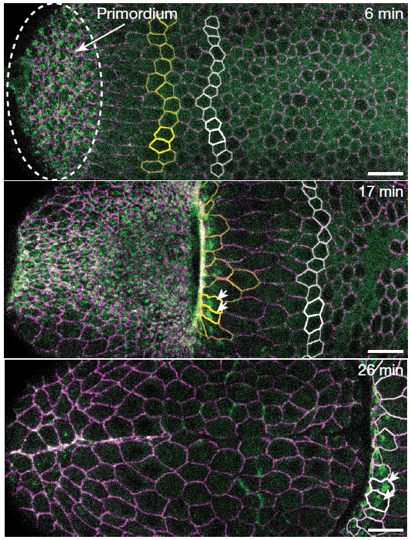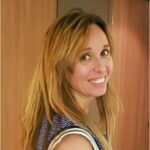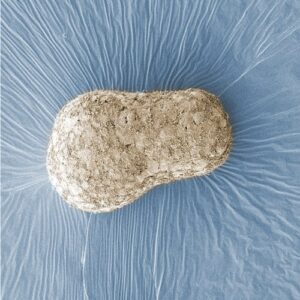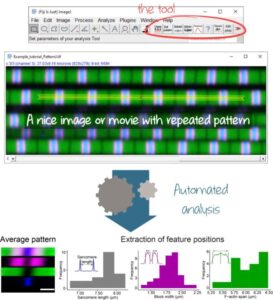
During embryonic development cells and tissues change their shape to form organs in a process known as morphogenesis. This process is traditionally thought to be controlled by genetic factors that instruct the tissue shape changes as in a program. Expression of specific genes instructs each cell when and where to change its shape, similar to a conductor who directs musicians in an orchestra.
In a recent study appeared on the international journal Nature, Thomas Lecuit and his colleagues at the Institut de Biologie du Développement de Marseille describe how tissue shape changes are self-organized. Using the early fruit fly embryo as model system they found that the fly gut is shaped by a wave of cell deformations similar to a stadium wave. One row of cell after the other, the cells bend and expand as they stick to the membrane around the egg, then contract and detach. Following an initial genetic local trigger the wave proceeds independently of a genetic program by mechanical communication between cells. As a result, the shaping of the fly gut results from mechanochemical interactions between cells rather than strictly from a genetic program. This work was a collaboration between two members of Thomas Lecuit’s research group, Claudio Collinet, a CNRS researcher and cell biologist, and Anaïs Bailles, a PhD student with background in biophysics. The team also benefited from the expertise in mathematical modelling of Edwin Munro from the University of Chicago. This illustrates how collaborative and interdisciplinary research allows one to reach new goals.
This work was the subject of the News and Views section in the journal Nature.
Article link:
-
Genetic induction and mechanochemical propagation of a morphogenetic wave.
Bailles A, Collinet C, Philippe JM, Lenne PF, Munro E, Lecuit T.
Nature. 2019 Aug;572(7770):467-473. doi: 10.1038/s41586-019-1492-9. Epub 2019 Aug 15.
Contact:
Thomas Lecuit : thomas.lecuit@univ-amu.fr
Institut de Biologie de Développement de Marseille. Aix-Marseille Université & CNRS.
Centre Turing des Systèmes Vivants (CENTURI), Aix-Marseille Université.
Collège de France, Paris.



